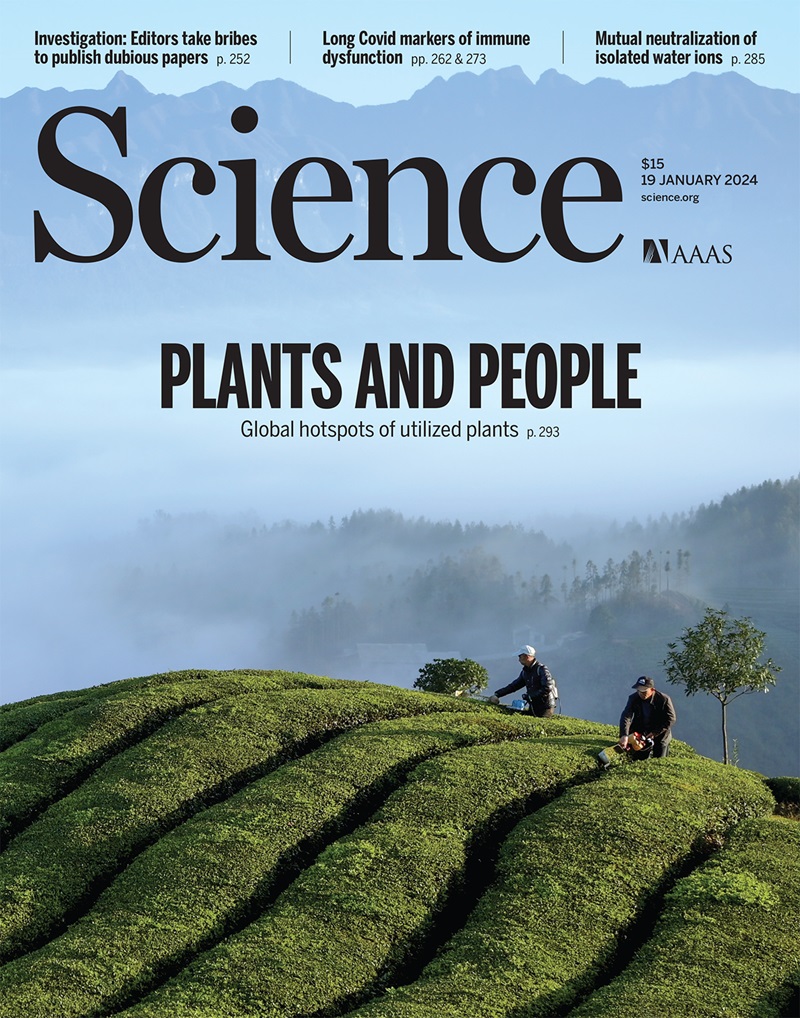Oxygen- and proton-transporting open framework ionomer for medium-temperature fuel cells
IF 45.8
1区 综合性期刊
Q1 MULTIDISCIPLINARY SCIENCES
引用次数: 0
Abstract
Medium-temperature proton exchange membrane fuel cells (MT PEMFCs) operating at 100° to 120°C have improved kinetics, simplified thermal and water management, and broadened fuel tolerance compared with low-temperature PEMFCs. However, high temperatures lead to Nafion ionomer dehydration and exacerbate gas transportation limitations. Inspired by osmolytes found in hyperthermophiles, we developed α-aminoketone–linked covalent organic framework (COF) ionomers, interwoven with Nafion, to act as “breathable” proton conductors. This approach leverages synergistic hydrogen bonding to retain water, enhancing hydration and proton transport while reducing oxygen transport resistance. For commercial Pt/C, the MT PEMFCs achieved peak and rated power densities of 18.1 and 9.5 Watts per milligram of Pt at the cathode at 105°C fueled with H2 and air, marking increases of 101 and 187%, respectively, compared with cells lacking the COF.
用于中温燃料电池的氧和质子传输开放式框架离子聚合物。
与低温质子交换膜燃料电池相比,工作温度在 100° 至 120°C 的中温质子交换膜燃料电池(MT PEMFC)改善了动力学性能,简化了热管理和水管理,并扩大了燃料耐受性。然而,高温会导致 Nafion 离子膜脱水,并加剧气体输送的限制。受嗜热生物中渗透溶解物的启发,我们开发了与α-氨基酮连接的共价有机框架(COF)离聚物,与 Nafion 相互交织,作为 "可呼吸 "的质子导体。这种方法利用氢键的协同作用保留水分,增强了水合作用和质子传输,同时降低了氧气传输阻力。对于商用 Pt/C,MT PEMFC 在 105°C 温度下以 H2 和空气为燃料,阴极每毫克 Pt 的峰值功率密度和额定功率密度分别达到 18.1 瓦特和 9.5 瓦特,与缺乏 COF 的电池相比,分别提高了 101% 和 187%。
本文章由计算机程序翻译,如有差异,请以英文原文为准。
求助全文
约1分钟内获得全文
求助全文
来源期刊

Science
综合性期刊-综合性期刊
CiteScore
61.10
自引率
0.90%
发文量
0
审稿时长
2.1 months
期刊介绍:
Science is a leading outlet for scientific news, commentary, and cutting-edge research. Through its print and online incarnations, Science reaches an estimated worldwide readership of more than one million. Science’s authorship is global too, and its articles consistently rank among the world's most cited research.
Science serves as a forum for discussion of important issues related to the advancement of science by publishing material on which a consensus has been reached as well as including the presentation of minority or conflicting points of view. Accordingly, all articles published in Science—including editorials, news and comment, and book reviews—are signed and reflect the individual views of the authors and not official points of view adopted by AAAS or the institutions with which the authors are affiliated.
Science seeks to publish those papers that are most influential in their fields or across fields and that will significantly advance scientific understanding. Selected papers should present novel and broadly important data, syntheses, or concepts. They should merit recognition by the wider scientific community and general public provided by publication in Science, beyond that provided by specialty journals. Science welcomes submissions from all fields of science and from any source. The editors are committed to the prompt evaluation and publication of submitted papers while upholding high standards that support reproducibility of published research. Science is published weekly; selected papers are published online ahead of print.
 求助内容:
求助内容: 应助结果提醒方式:
应助结果提醒方式:


